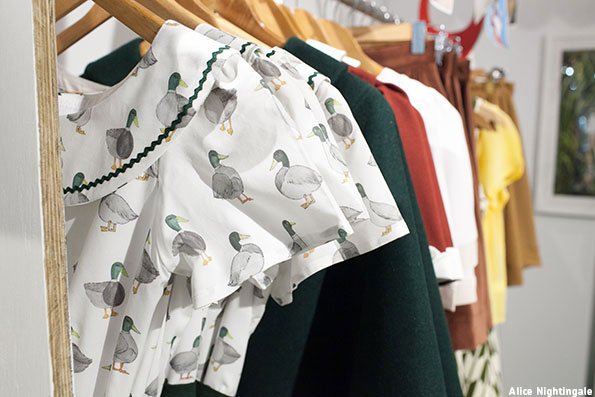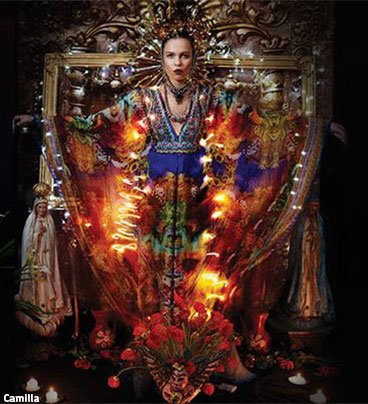By Phoebes Garland - Garland and Garland & Fashion Initiative Speak to most designers in confidence and it won’t take long for two problems to dominate the conversation about their business: manufacturing woes and lack of money for production. Not only have these issues inhibited growth for many fashion brands, but also through lack of resources that has seen the demise of many.The problem starts with the lack of volume. Most high-end brands are paying high unit costs for manufacturing and quite often, high fabric costs, which can make their retail price uncompetitive, resulting in poor volume sales and it makes expansion difficult. Low sales also means the company misses out on economies of scale at manufacturing so their unit price remains high. It’s a classic catch-22.Since the GFC, consumers have become more price conscious and value aware. The price consumers are prepared to pay for garments have fallen dramatically, coinciding with the influx of ‘fast fashion’ chains arriving on our shores, which has also driven down retail price points.While the consumer has become price and value conscious, manufacturing prices have not decreased. If anything they’ve increased with the drastic fall of the Australian Dollar affecting the make price and the fabric price. High trend fashion brands at high price points remain at risk of not being able to compete with the fast-to-market chain stores that offer the high-end look for less. And in many cases a lot less.So without sales volume and a comfortable margin, the inability to secure low-cost manufacturing becomes difficult for labels. While fashion has become price pointed, make no mistake it’s not all about being cheap, it’s about offering value for money.The fashion labels that have become successful in Australia understand the importance of volume. They have competitive price points and design to match the global platform. Having understood, their savvy customers are now researching and comparing local products with the best the world can offer.Some of the higher priced brands which are still having enormous success, such as Scanlan Theodore, Mela Purdie, Camilla and Carla Zampatti to name a few, are not only highly established ‘brands’, but also have a wide and diverse following of age groups from as young as 25 right through to over 60 year olds with their designs also having an element of longevity to them.
Most high-end brands are paying high unit costs for manufacturing and quite often, high fabric costs, which can make their retail price uncompetitive, resulting in poor volume sales and it makes expansion difficult. Low sales also means the company misses out on economies of scale at manufacturing so their unit price remains high. It’s a classic catch-22.Since the GFC, consumers have become more price conscious and value aware. The price consumers are prepared to pay for garments have fallen dramatically, coinciding with the influx of ‘fast fashion’ chains arriving on our shores, which has also driven down retail price points.While the consumer has become price and value conscious, manufacturing prices have not decreased. If anything they’ve increased with the drastic fall of the Australian Dollar affecting the make price and the fabric price. High trend fashion brands at high price points remain at risk of not being able to compete with the fast-to-market chain stores that offer the high-end look for less. And in many cases a lot less.So without sales volume and a comfortable margin, the inability to secure low-cost manufacturing becomes difficult for labels. While fashion has become price pointed, make no mistake it’s not all about being cheap, it’s about offering value for money.The fashion labels that have become successful in Australia understand the importance of volume. They have competitive price points and design to match the global platform. Having understood, their savvy customers are now researching and comparing local products with the best the world can offer.Some of the higher priced brands which are still having enormous success, such as Scanlan Theodore, Mela Purdie, Camilla and Carla Zampatti to name a few, are not only highly established ‘brands’, but also have a wide and diverse following of age groups from as young as 25 right through to over 60 year olds with their designs also having an element of longevity to them.
 These brands tend to have key fashion pieces whilst keeping a signature look with a strong knowledge of their customer. Loyal customers keep coming back for more to add to their devoted collection in their wardrobes of the brand.
These brands tend to have key fashion pieces whilst keeping a signature look with a strong knowledge of their customer. Loyal customers keep coming back for more to add to their devoted collection in their wardrobes of the brand.
 Phoebes Garland is a Feature Writer for Fashion Exposed Online & co-owns Garland & Garland Fashion with Robert Garland, a leading fashion agency based in Sydney. Phoebes also owns Fashion Initiative, an online fashion destination covering business of fashion, luxury and events who has been described as a” Power Agent” by Ragtrader Magazine. Between the two of them, Phoebes & Robert Garland have over 50 years sales experience in fashion, publishing and advertising. Phoebes is on the Advisory Board for Fashion Design Studio (Sydney Tafe) in 2014 and is an industry mentor to designers with industry body Australian Fashion Chamber.Garland & Garland Fashion are a respected leading boutique fashion agency based in Sydney and they are regularly sought for comment from various media and the fashion industry on business fashion topics, fashion and issue.garlandsandgarlands.com.auFollow: Phoebes Garland on the following Social MediaTwitterFacebookPinterestInstagram
Phoebes Garland is a Feature Writer for Fashion Exposed Online & co-owns Garland & Garland Fashion with Robert Garland, a leading fashion agency based in Sydney. Phoebes also owns Fashion Initiative, an online fashion destination covering business of fashion, luxury and events who has been described as a” Power Agent” by Ragtrader Magazine. Between the two of them, Phoebes & Robert Garland have over 50 years sales experience in fashion, publishing and advertising. Phoebes is on the Advisory Board for Fashion Design Studio (Sydney Tafe) in 2014 and is an industry mentor to designers with industry body Australian Fashion Chamber.Garland & Garland Fashion are a respected leading boutique fashion agency based in Sydney and they are regularly sought for comment from various media and the fashion industry on business fashion topics, fashion and issue.garlandsandgarlands.com.auFollow: Phoebes Garland on the following Social MediaTwitterFacebookPinterestInstagram

